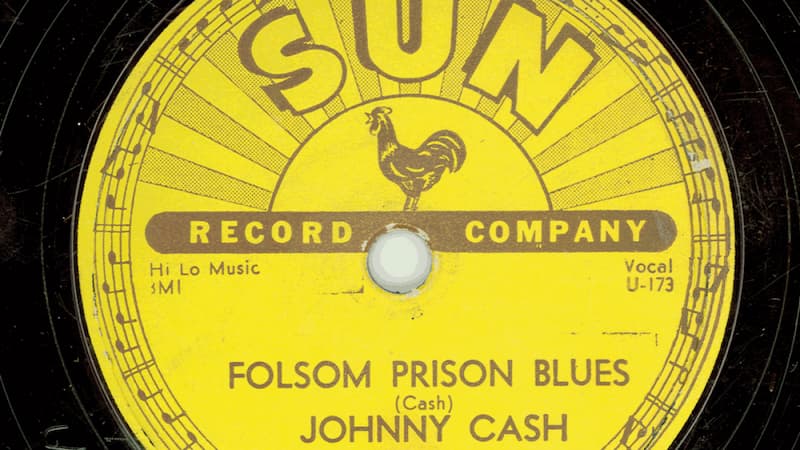About The Song
In the midst of depression and a steep decline in his musical career, legendary country singer Johnny Cash arrives to play for inmates at California’s Folsom Prison on January 13, 1968. The concert and the subsequent live album launched him back into the charts and re-defined his career.
Despite his outlaw image, Cash never went to prison, save for a few nights drying out in various jails. It was not his own experience but rather the crime film Inside the Walls of Folsom Prison that inspired him to pen “Folsom Prison Blues,” which was a modest hit for Cash in 1956. The song, characteristically mournful, is written from the point of view of an inmate “stuck in Folsom Prison” after shooting a man in Reno “just to watch him die” – Cash explained that he wanted to come up with the most senseless reason imaginable for the speaker to have committed murder. A decade later, Cash’s alcoholism and addiction to pills had taken a marked toll on his health. Cash was popular in prisons across America and was known to correspond with imprisoned fans, and first played at Folsom in 1966 on the suggestion of a local preacher. Two years later, needing something to jump-start his career, he convinced his record company to let him record a live album there.
Cash felt a personal responsibility to put on a good show at Folsom. He rehearsed feverishly in the days leading up to the concert and taught himself “Greystone Chapel,” a song written by Folsom inmate Glen Sherley. Despite the presence of armed guards on the walkways above them, and the warden’s prohibition against standing during the show, Cash’s audience was raucous, invigorating the performers and lending a unique verve to the live recording. Cash tailored the setlist to prisoners, including the namesake song and ending with “Greystone Chapel.” The album went to No. 1, as did a subsequent album recorded at San Quentin, and suddenly Cash was a household name again.
The iconic performance linked Cash permanently with prisoners in the American imagination. In his 1971 song “Man in Black,” Cash explains that he adopted his trademark dark clothing in solidarity with “the poor and the beaten down” as well as “the prisoner who has long paid for his crime.” Cash testified before Congress and met with President Richard Nixon to discuss prison reform in 1972, and continued to crusade on behalf of the imprisoned for the rest of his career. Live at Folsom Prison stands as a testament to the bond he felt with inmates as well as a major entry in the canon of 20th Century American music.
Video
Lyrics
I hear the train a-coming
It’s rolling ’round the bend
And I ain’t seen the sunshine since I don’t know when
I’m stuck in Folsom Prison
And time keeps dragging on
But that train keeps a-rolling
On down to San Antone
When I was just a baby
My mama told me, “Son
Always be a good boy, don’t ever play with guns”
But I shot a man in Reno
Just to watch him die
When I hear that whistle blowing
I hang my head and cry
I bet there’s rich folks eating in a fancy dining car
They’re probably drinking coffee
And smoking big cigars
But I know I had it coming
I know I can’t be free
But those people keep a-moving
And that’s what tortures me
Well, if they freed me from this prison
If that railroad train was mine
I bet I’d move it on a little farther down the line
Far from Folsom Prison
That’s where I want to stay
And I’d let that lonesome whistle
Blow my blues away
